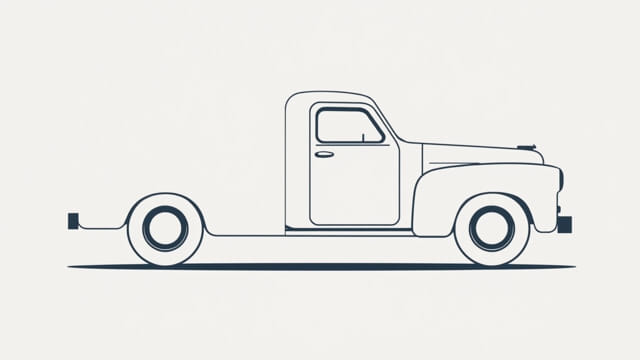Did Studebaker Make a Truck
Studebaker, a legendary name in American automotive history, is often remembered for its stylish cars and innovative engineering. However, a lesser-known fact among casual enthusiasts is that Studebaker did indeed make trucks. While their cars captured much of the public’s attention, the company’s history of truck manufacturing played an essential role in their legacy. From rugged early 20th-century models to post-war pickups, Studebaker trucks earned a reputation for durability and design. Understanding Studebaker’s involvement in truck production offers insight into a fascinating chapter of automotive development in the United States.
The Early Roots of Studebaker
Studebaker began not as a car company, but as a wagon manufacturer. Founded in the 1850s in South Bend, Indiana, Studebaker Brothers Manufacturing Company became one of the largest producers of wagons used by farmers, businesses, and even the U.S. military. This early experience in building strong, functional vehicles laid the foundation for their eventual move into automotive production including trucks.
Transition to Motor Vehicles
By the early 1900s, Studebaker began experimenting with motorized vehicles. They produced electric cars as early as 1902 before moving into gasoline-powered models. Recognizing the increasing demand for utility vehicles, Studebaker began building trucks to meet the needs of a growing industrial nation. Their early motor trucks were designed for commercial use and featured heavy-duty frames and engines.
Studebaker’s First Trucks
Studebaker started producing motor trucks in the 1910s. These vehicles were often used by delivery services, small businesses, and farmers. Known for their sturdy build and reliable performance, Studebaker trucks became a practical choice in rural and urban areas alike.
- Their first gasoline-powered trucks were marketed in 1913.
- Early models were often used by utility companies and delivery services.
- Studebaker built both light and medium-duty trucks during this time.
Military Contributions
During both World Wars, Studebaker was a key supplier of military vehicles. In World War II, their trucks including the US6 model were used extensively by Allied forces. The US6 was a 2½-ton 6×6 truck that played a major role in supplying troops and transporting equipment. Studebaker’s reputation for durable trucks was cemented during these war efforts.
Post-War Pickup Trucks
After World War II, Studebaker returned to civilian vehicle production and expanded its line of pickup trucks. These post-war trucks were not just tools for labor they began incorporating styling cues that made them appealing to individual buyers and small business owners.
The 2R Series
One of Studebaker’s most successful truck lines was the 2R series, introduced in 1949. These trucks were known for their clean design, fuel efficiency, and practical features. The 2R models were available in several configurations and engine options, making them versatile for different customer needs.
- The 2R5 was a half-ton pickup and one of the most popular models.
- The trucks featured a unique ‘wind tunnel’ design that improved aerodynamics.
- They were among the first trucks to offer overdrive transmissions for better highway performance.
Updates and Evolution
In the early 1950s, Studebaker updated its trucks with the 3R series, which offered slight design changes but kept the same fundamental engineering. The company continued refining its trucks, but faced growing competition from the Big Three automakers Ford, Chevrolet, and Dodge. Despite producing reliable vehicles, Studebaker struggled to keep pace in terms of production volume and marketing reach.
Innovations and Unique Models
Studebaker wasn’t afraid to try new ideas. One of their most unique entries in the truck market was the 1960 Studebaker Champ. To save costs, Studebaker created the Champ pickup using the front end of the Lark passenger car combined with a truck bed. This hybrid design gave the Champ a distinctive appearance and helped Studebaker remain in the light truck market during a time of financial difficulty.
Studebaker Champ Features
The Studebaker Champ was available in several configurations and engine sizes, including a V8 option. It had car-like comfort inside the cab but retained the durability expected from a pickup. While the Champ didn’t achieve massive sales, it remains a notable part of Studebaker’s truck legacy.
The Decline of Studebaker’s Truck Production
As the 1960s progressed, Studebaker’s financial struggles deepened. Unable to compete with the massive production capabilities and advertising budgets of its larger competitors, the company began scaling back operations. Truck production ended in 1964, shortly before Studebaker ceased all U.S. manufacturing in 1966. While the Canadian branch continued building cars briefly, it did not produce trucks.
Why Studebaker Trucks Faded
Several factors contributed to the end of Studebaker’s truck production:
- Increased competition from larger automakers
- Limited resources for design and engineering updates
- Smaller dealer network compared to Ford and GM
- Shifting consumer preferences and industrial demands
Legacy of Studebaker Trucks
Although Studebaker no longer exists as a vehicle manufacturer, its trucks live on among collectors, restorers, and automotive historians. Vintage Studebaker trucks especially the 2R series and military models are highly valued for their craftsmanship and unique design. Enthusiast communities continue to celebrate the brand’s contributions to American automotive history.
Studebaker Trucks in Popular Culture
Studebaker vehicles, including trucks, occasionally appear in classic car shows, films, and museum exhibits. Their distinct styling makes them stand out from more common brands, and they serve as a reminder of a time when innovation came from more than just the biggest players in the industry.
Yes, Studebaker did make trucks and quite a variety of them over several decades. From early commercial models and military vehicles to stylish post-war pickups, Studebaker trucks were known for their durability, innovation, and unique design. Though the company eventually exited the truck market and faded from the automotive landscape, its trucks remain a cherished part of American vehicle history. Whether seen at a classic car meet or remembered by vintage vehicle enthusiasts, Studebaker trucks continue to hold their own legacy on the road.
